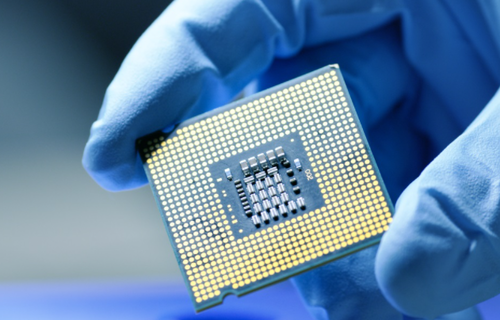Semi Shortage To Last Until “Mid-To-Late 2022”, World’s Third Largest Electronics Manufacturer Says
It still looks like we are nowhere near the end of the ongoing global semi chip shortage. Even worse, more manufacturers are confirming that the shortage could last “for at least another year”, catalyzed by sharp post-pandemic demand for automobiles and electronics.
Flex, the world’s third-biggest electronics contract manufacturer, offered up the “gloomiest” forecast for the crisis yet to FT this week. The company has more than 100 sites in 30 countries and works with major names like Dyson and HP.
Lynn Torrel, Flex’s chief procurement and supply chain officer, told FT: “With such strong demand, the expectation is mid to late-2022 depending on the commodity. Some are expecting [shortages to continue] into 2023.”
Revathi Advaithi, chief executive of Flex added that the shortage has prompted the company’s multinational customers to “take a far more serious look at restructuring their supply chains than the trade war between the US and China ever did”.
Adavaithi commented: “Most companies won’t make a decision to regionalize just on tariffs. They know it could be a short-term thing but things like the pandemic and escalation of shipping costs that impact the total cost of ownership drives regionalization.”
Flex’s pessimistic forecast follows that of Intel CEO Pat Gelsinger last week, who we pointed out said that the shortage could last “a couple years”.
Gelsinger said that the pandemic-inspired “work from home” trend caused a “cycle of explosive growth in semiconductors”, according to Reuters.
“But while the industry has taken steps to address near term constraints it could still take a couple of years for the ecosystem to address shortages of foundry capacity, substrates and components,” Gelsinger commented.
Gelsinger also reiterated Intel’s plans to expand: “We plan to expand to other locations in the U.S. and Europe, ensuring a sustainable and secure semiconductor supply chain for the world.”
Intel is trying to keep pace with Samsung and Taiwan Semiconductor – both of which also have plans to expand, including into the U.S. – to increase semi production.
We noted in mid-May that TSMC had plans of “doubling down” and vastly increasing its investment for production in Arizona. The chipmaking giant said at the time it was “weighing plans to pump tens of billions of dollars more into cutting-edge chip factories in the U.S. state of Arizona than it had previously disclosed”.
The company had already said it was going to invest $10 billion to $12 billion in Arizona. It now appears to be mulling a more advanced 3 nanometer plant that could cost between $23 billion and $25 billion. The changes would come over the next 10 to 15 years, as the company builds out its Phoenix campus.
Intel’s CEO, speaking on 60 Minutes last month, had already suggested it could be a while before things are back to normal.
He said then: “We have a couple of years until we catch up to this surging demand across every aspect of the business.” Days prior to Gelsinger’s initial statements, we wrote that Morgan Stanley had also suggested the shortage could continue “well into 2022”.
Tyler Durden
Mon, 06/07/2021 – 14:27
via ZeroHedge News https://ift.tt/3w3NH9H Tyler Durden
